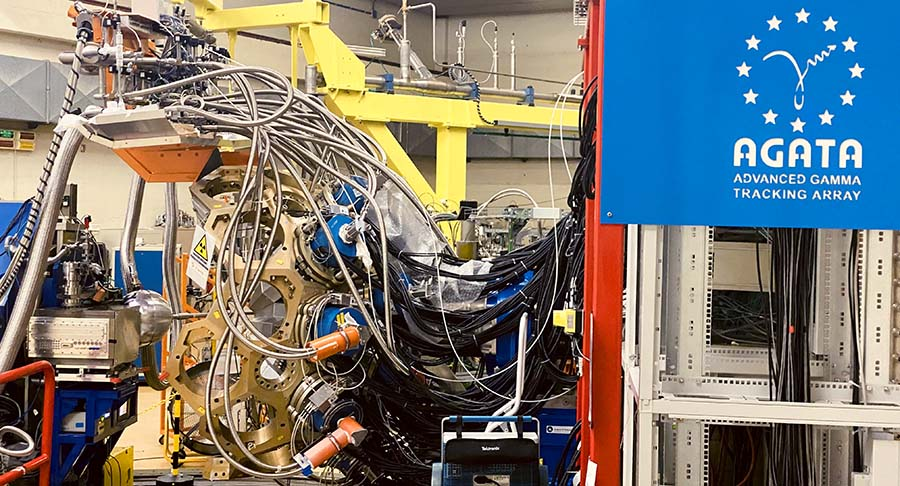Orateur
Description
The nickel isotopes offer a unique laboratory to investigate shape evolution in the vicinity of doubly-magic N=Z nucleus, $^{56}$Ni (Z=N=28), which should exhibit similar structural properties to those observed in the Z=N=20 region. Indeed, observation of the SD structures was reported also in $^{56}$Ni, explained as the result of $mp-mh$ excitations like in the case of $^{40}$Ca [3]. However, recently the questions on the validity of Z/N=28 as a good magic number have been brought up triggering the discussion on the deformation in the nickel region, including the signatures of shape coexistence. Microscopic and collective properties in the vicinity of $^{56}$Ni shall be evaluated with the dedicated measurements of the deformation and the neighboring nuclei. To this end, the Coulomb excitation studies focused on the structure of $^{58,60,62}$Ni isotopes are currently undertaken at INFN LNL, IJC Lab in Orsay and at HIL Warsaw. These, together with the recent findings from the $\gamma$-ray and electron spectroscopy measurements reporting the unexpectedly large $E0$ transition strengths for the 2$^+_2\to$2$^+_1$ transitions of $^{58,60,62}$Ni [2], shall bring crucial information enabling the further discussion on the electromagnetic properties of Ni isotopes.
Coulomb excitation of $^{60}$Ni beam of 240 MeV energy impinging on $^{208}$Pb target was performed at INFN LNL, Italy in October 2023. The experiment was carried out using 12 AGATA triple clusters [3,4] coupled to the particle detection array SPIDER [5] to register back-scattered beam ions. SPIDER was placed at laboratory angles to enhance the probability of multistep Coulomb excitation. Details of the experiment performed with AGATA at LNL along with the current status of the data analysis will be presented.
[1] D. Rudolph et al., Phys. Rev. Lett. 82, 3763 (1999)
[2] L.J. Evitts et al., Phys. Lett. B 779, 396 (2018).
[3] S. Akkoyun et al., NIM A668 (2012) 26.
[4] J.J. Valiente-Dobon et al., NIM A1049 (2023) 168040.
[5] M. Rocchini et al., NIM A971 (2020) 164030.

